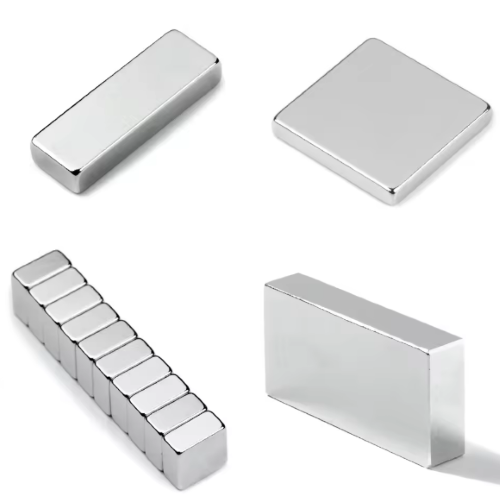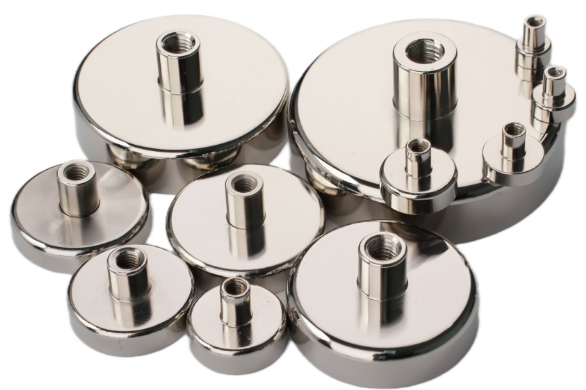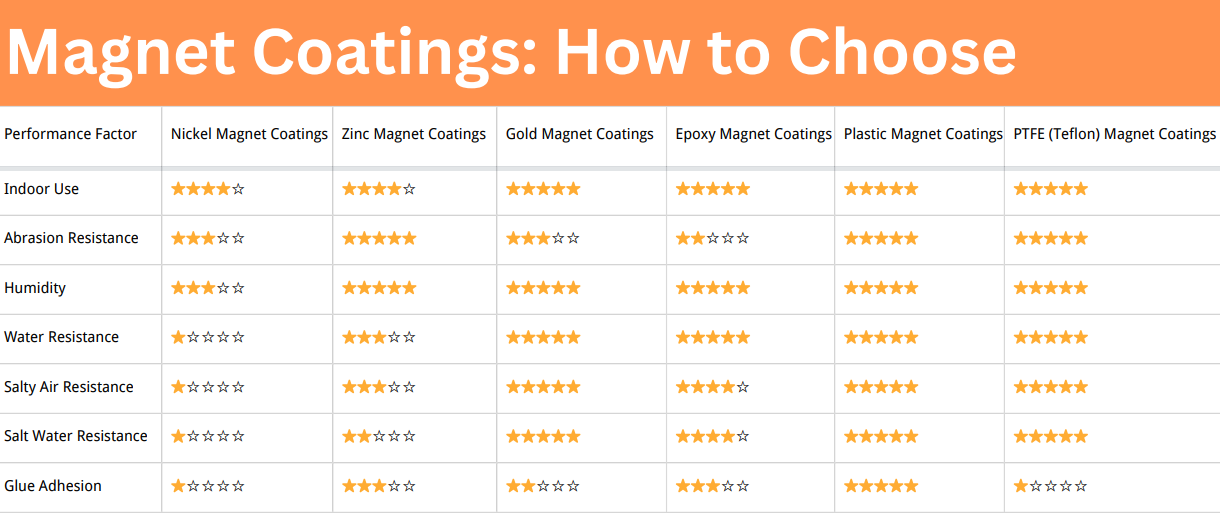General Information about Neodymium Iron Boron (NdFeB) Magnets
Introduction
Neodymium Iron Boron (NdFeB) magnets, also known as neodymium magnets, are a type of rare earth magnet and are the most widely used form of rare earth magnets. They are made from an alloy of neodymium, iron, and boron, and are known for their exceptional magnetic strength. Here’s a more detailed look at their characteristics and uses.

Characteristics of NdFeB Magnets
- Strength: NdFeB magnets are the strongest type of permanent magnets available commercially, significantly stronger than ferrite or alnico magnets. This strength allows them to be used in applications where a small size and maximum strength are required.
- Composition: Typically, these magnets are composed of approximately 68% iron, 1% boron, and the remainder neodymium, though the exact composition can vary depending on the specific properties desired.
- Grades: They come in various grades, which indicate the strength of the magnetic field they produce. Higher grades (like N52) are much stronger but also more sensitive to demagnetization and environmental factors.
- Coatings: Because neodymium magnets are susceptible to corrosion, they are usually coated or plated with materials such as nickel, zinc, or epoxy to protect them from the environment.
- Temperature Sensitivity: Their magnetic properties can change, typically decreasing, with an increase in temperature. High-grade NdFeB magnets can tolerate higher temperatures but generally, these magnets are suitable for operating in environments up to about 200 degrees Celsius.
Related reading: What Are Neodymium Magnets?
Uses of NdFeB Magnets
- Electronics: They are used in various electronic devices, including hard disk drives, headphones, speakers, and mobile phones, due to their ability to produce strong magnetic fields in compact sizes.
- Industrial Applications: Neodymium magnets are used in industrial motors, generators, and magnetic separation equipment where strong magnetic fields are required.
- Medical Devices: They are used in medical devices such as magnetic resonance imaging (MRI) machines and in dental and orthopedic implants.
- Clean Energy: They play a crucial role in green technologies, such as in the motors of electric vehicles and in wind turbine generators.
- Consumer Goods: Many everyday items, like toys, jewelry, and tools, utilize these magnets due to their powerful magnetic strength.
NdFeB Magnets of Different Grades
Stanford Magnets is a trusted supplier of various types of neodymium magnets. See the table below. Our magnets are in multiple shapes and grades. Customization is also welcome. Visit our website to explore our extensive collection of neodymium magnets of different grades.
Table 1 NdFeB Magnets of Different Grades
|
Grade |
Residual Induction/BR |
Coercive Force/Hc (Oe) |
Intrinsic Coercive Force/Hci (Koe) |
Max.Energy Product/Bhmax (MGOe) |
Maximum Operating |
Curie Temp (°C/°F) |
|
N35 |
11700 |
10900 |
12 |
35 |
80/176 |
310/590 |
|
N38 |
12200 |
11300 |
12 |
38 |
80/176 |
310/590 |
|
N40 |
12500 |
11400 |
12 |
40 |
80/176 |
310/590 |
|
N42 |
12800 |
11500 |
12 |
42 |
80/176 |
310/590 |
|
N45 |
13200 |
11600 |
12 |
45 |
80/176 |
310/590 |
|
N48 |
13800 |
11600 |
12 |
48 |
80/176 |
310/590 |
|
N50 |
14000 |
10000 |
11 |
50 |
60/140 |
310/590 |
|
N52 |
14300 |
10000 |
11 |
52 |
60/140 |
310/590 |















